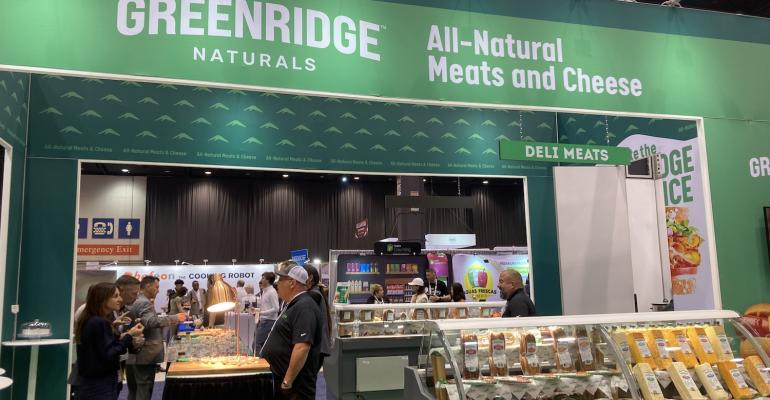Younger consumers are used to being deluged with information, some of it accurate and much of it not. Understandably, they’re rejecting a lot of it and are plotting their own paths to health and wellness. In response, foodservice operators need to be ready with answers when questions arise about their menu items, and they need to provide the food and beverages that their customers want, whatever their dietary choices might be.
That was the assessment of participants in a panel titled “Better Foods for Customers=Better Business for You” during the National Restaurant Show.
Industry veteran Carin Stutz, currently on the board of directors for Kura Sushi & Hawaiian Bros, was joined by George Madzhirov, founder and CEO of HandCut Foods, a contract foodservice company that’s part of the Compass Group, and Lizzy Freier, director for menu research and insights for research firm Technomic, in a conversation moderated by Adrienne Smith of New Hope, which operates the Natural Products Expo.
“There’s a lot of misinformation out there, and bad marketing,” Madzhirov said. In response, individuals, especially members of GenZ, are “listening to their own bodies” to determine what they should be eating.
“Everybody is looking for their own interpretation of what’s good for them,” he said. “It’s not one size fits all.”
And it’s not always specifically about nutrition, Freier said. The modern consumer often perceives ingredients or menu items that are environmentally friendly, with sustainability or animal welfare callouts in their descriptors, as being better for them.
Additionally, the trend of a couple of decades ago, when healthy eating was perceived to be about removing things, such as calories and fat, has been replaced by more positive messaging.
“Now we’re seeing operators turn to things like functional ingredients you can add to help people,” Freier said.
Removing ingredients that are perceived as unnatural, such as stabilizers or artificial colors, remains important, however, Stutz said.
That’s an initiative she spearheaded when she was president of McAlister’s Deli, around the same time that Whole Foods Market, with its natural/local/organic messaging, was growing in popularity and Panera released its “no-no list” of ingredients it wouldn’t allow in its food.
Stutz started by making sure that certain artificial ingredients weren’t contained in new SKUs that were brought into McCalister’s, and then she started asking her suppliers to eliminate those ingredients from existing products.
“We found suppliers very willing to support it,” she said. “If we demand better ingredients, we’ll get that.”
Madzhirov said his guests were looking for ingredients that didn’t contain anything artificial and that told a story of authenticity and transparency.
“It’s almost an anti-industrial trend,” he said.
But he added that his guests, especially younger ones, don’t want to be lectured.
“They do inquiry-based learning,” he said. They’ll push back if they’re fed information, but he told the audience of restaurant operators that they needed to have information at their fingertips when those customers asked questions.
“We’re talking about very intelligent consumers — eaters who have a lot of information,” he said. “You’d better know what [food and beverage] you’re putting out there.”
Stutz, who also was president and CEO of vegan chain Native Foods, agreed that customers are making their own decisions based on their perceived individual needs — for example seeking out items that don’t contain gluten, or soy, or MSG.
“I’ve never seen someone say, ‘where’s the healthy section of the menu?’”
She said she’s waiting for our society to reach a tipping point when “people actually go to a restaurant looking to eat healthy food,” but restaurant experiences continue to be focused on indulgence.
Nonetheless, those healthy item need to be there, Frier said. They help drive incremental traffic to encourage guests to come through their doors, even if they ultimately choose to forego the salad they came in for in favor of a cheeseburger. Offering better-for-you items also helps to eliminate the “veto vote” by providing options for those guests who want it, she said.
Stutz added that food that’s indulgent and food that’s good for you don’t need to be mutually exclusive, and she said the foodservice industry should take the lead in demanding cleaner ingredients from suppliers.
Madzhirov added that healthful and sustainable items also need to be approachable and affordable. “If not, then it’s just virtue signaling,” he said.
Stutz added that no matter what the messaging or actual nutritional content of an item is, people have to like eating it.
“At the end of the day it has to taste great,” she said. “Nothing else matters.”
New Hope and Technomic are both divisions of Informa, which also operates the Restaurant Show.
Contact Bret Thorn at [email protected]




